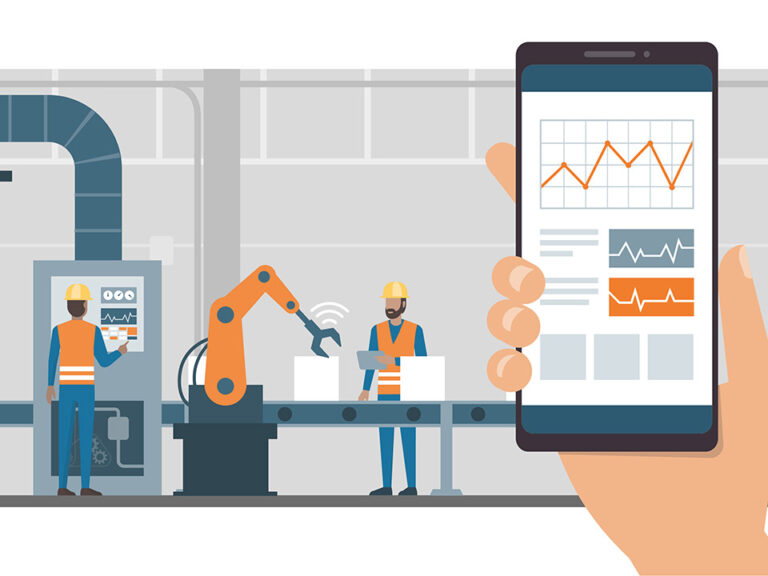In the rapidly evolving world of Industry 4.0, automation has emerged as a cornerstone of progress, especially in the manufacturing sector. This transformation isn’t just about automating routine tasks; it’s about leveraging a suite of advanced technologies like AI, Leaniar technology, and robotic process automation (RPA) to revolutionize how manufacturing operations are conducted. In this blog post, we delve into the pivotal role of automation in manufacturing, exploring its benefits, applications, and the cutting-edge combination of AI and Leaniar technology that is setting new benchmarks in the industry.
Unlocking Efficiency with Industrial Automation
Streamlining Operations through RPA and AI
The integration of RPA and AI in manufacturing represents a leap towards operational excellence. RPA, or Robotic Process Automation, automates repetitive tasks across the manufacturing floor, reducing errors and freeing up human workers for more complex tasks. AI takes this a step further by enabling machines to make data-driven decisions, predict maintenance needs, and optimize production lines in real-time. This synergy not only boosts efficiency but also enhances the quality of products by minimizing human error and machine downtime.
Leaniar Technology: A Game-Changer for Manufacturing
Leaniar technology has become a game-changer for manufacturing units, enabling data processing to occur closer to where it is generated. This reduces latency and allows for real-time analytics, crucial for operations that require immediate feedback, such as quality control and predictive maintenance. By integrating Leaniar technology, manufacturing facilities can leverage the power of AI at the edge, making operations more agile and responsive to changes in the production environment.
The Role of Sensors and IoT in Automation
Sensors and IoT devices play a crucial role in automating and streamlining manufacturing processes. These technologies collect vast amounts of data from the assembly line to the shipping dock, providing a comprehensive view of the manufacturing operations. This data, when analyzed, can lead to actionable insights that help reduce costs, improve supply chain efficiency, and enhance the overall customer experience.
Transforming the Manufacturing Landscape
Advancing Supply Chain and Inventory Management
Automation in manufacturing extends beyond the production floor to encompass supply chain and inventory management. Automated systems, powered by AI and machine learning algorithms, can predict supply needs, track inventory levels in real-time, and even automate ordering processes. This level of automation ensures that manufacturing organizations can maintain optimal inventory levels, reduce waste, and avoid production delays.
Enhancing Quality Control with AI and Machine Learning
The implementation of AI and machine learning in quality control processes represents a significant advancement for manufacturing companies. Computer vision and AI technologies can inspect and identify defects in products as they move along the production line, ensuring that only items meeting the highest standards reach the customer. This automated approach to quality control is not only more efficient but also more reliable than traditional methods.
Predictive Maintenance: Minimizing Downtime and Costs
One of the most valuable applications of automation in the manufacturing environment is predictive maintenance. By analyzing data from sensors and IoT devices, AI-powered systems can predict when machines and equipment are likely to fail or require maintenance, allowing for proactive repairs. This significantly reduces downtime and operational costs, as maintenance can be scheduled during non-peak hours without disrupting production.
Conclusion
The automation edge in manufacturing is reshaping the industry, making operations more efficient, scalable, and adaptable to changing market demands. With the integration of RPA, AI, and Leaniar technology, manufacturing organizations are not only optimizing their current operations but also paving the way for future innovations.
We invite our readers to explore more articles on our blog to learn about the latest trends and technologies driving the new industry era. Whether you’re interested in technological innovations, operational technology, or the implementation of manufacturing automation, there’s a wealth of information waiting to unlock new opportunities for your business.
Frequently Asked Questions
How does automation improve manufacturing efficiency?
Automation streamlines business processes, reduces errors, and speeds up production times, leading to improved efficiency and productivity. Automation improves manufacturing efficiency in several ways:
- Reduced labor costs: By automating repetitive and time-consuming tasks, businesses can reduce the need for manual labor, resulting in cost savings.
- Increased production speed: Automation can complete tasks faster than humans, leading to quicker production times and faster delivery of products to customers.
- Improved accuracy: Machines are less prone to errors compared to humans, leading to higher quality products and reduced rework or waste.
- Better resource utilization: Automation can optimize the use of materials and resources, reducing waste and improving overall resource efficiency.
- Enhanced flexibility: Automated systems can quickly adapt to changing production demands and schedules, allowing manufacturing operations to be more responsive to market fluctuations.
- Improved safety: Automation can eliminate many hazardous tasks that pose a risk to workers, making the manufacturing environment safer and reducing the likelihood of accidents or injuries.
Overall, automation in manufacturing can lead to increased efficiency, cost savings, higher productivity, and a competitive edge in the market.
What is the role of Leaniar technology in manufacturing?
Leaniar technology processes data locally, reducing latency and enabling real-time analytics for quicker decision-making and operational efficiency. Additionally, Leaniar technology helps in streamlining manufacturing processes by identifying and eliminating waste, reducing lead times, and improving overall productivity. It also helps in optimizing inventory management, reducing costs, and enhancing quality control by providing continuous monitoring and feedback on production processes.
Overall, Leaniar technology plays a crucial role in modern manufacturing by enabling companies to operate more efficiently, respond quickly to changes in demand, and stay competitive in the fast-paced global market.
Can automation reduce operational costs in manufacturing?
Yes, by automating routine tasks and implementing predictive maintenance, manufacturing companies can significantly reduce labor costs and minimize downtime. Automation can also lead to increased efficiency, faster production times, fewer errors, and improved quality control. This can result in lower operational costs overall and higher profitability for manufacturing companies.
Additionally, automation can help streamline processes, optimize resource allocation, and improve overall productivity, further reducing operational costs. Overall, automation can have a significant impact on reducing operational costs in manufacturing.
How does AI enhance quality control in manufacturing?
AI and machine learning algorithms can analyze images from computer vision systems to detect defects, ensuring products meet quality standards. AI can analyze data from sensors in real-time to identify abnormalities in the manufacturing process, allowing for immediate corrective actions to be taken.
What are the benefits of predictive maintenance?
Predictive maintenance helps prevent unexpected equipment failures, reduces maintenance costs, and increases production efficiency by scheduling repairs before breakdowns occur. Other benefits of predictive maintenance include:
- Improved equipment reliability: By monitoring the condition of equipment in real-time, problems can be detected early and addressed before they lead to costly breakdowns.
- Extended equipment life: Regularly scheduled maintenance based on predictive data can help prolong the lifespan of equipment, reducing the need for premature replacement.
- Increased safety: Predictive maintenance can help identify potential safety hazards before they escalate, keeping workers and equipment safe.
- Better resource management: By accurately predicting when maintenance is needed, companies can better allocate resources, reducing downtime and minimizing production interruptions.
- Reduced operational costs: By identifying and addressing maintenance issues before they become major problems, companies can save money on emergency repairs and unplanned downtime.
- Improved overall equipment effectiveness: Predictive maintenance can lead to increased equipment availability, performance, and quality, ultimately leading to improved overall equipment effectiveness (OEE).
- Enhanced data-driven decision-making: By collecting and analyzing data on equipment performance, predictive maintenance can provide valuable insights that can inform strategic decision-making and help optimize maintenance strategies.
How can manufacturers implement automation in their facilities?
Manufacturers can start by integrating RPA for routine tasks, adopting IoT and sensors for data collection, and exploring AI for data analysis and decision-making. Working with automation platforms like Leaniar, designed for industrial environments, can facilitate a smooth transition.






